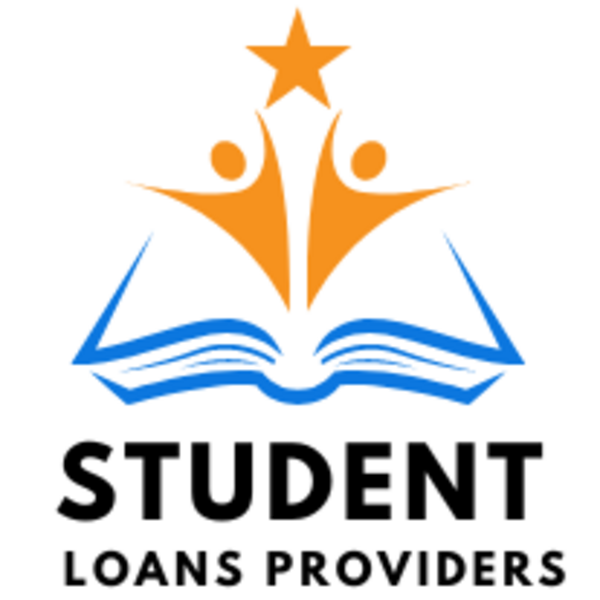Student Loans For Undergraduate degrees
Funding Your Future with Student Loans For Undergraduate Degrees
Student loans have become an essential part of financing higher education for many individuals pursuing undergraduate degrees. Understanding the intricacies of student loans, including eligibility criteria, required documentation, available options from banks and private lenders, as well as avenues for loan forgiveness, is crucial for making informed financial decisions. In this guide, we will delve into the various aspects of student loans for undergraduate degrees, covering eligibility criteria, documentation requirements, and exploring options for loan forgiveness.
Eligibility Criteria for Student Loans
To qualify for student loans for undergraduate degrees, individuals must meet certain eligibility criteria set forth by lenders or financial institutions. The eligibility criteria typically include:
- Enrollment in an Accredited Institution: Applicants must be enrolled or accepted for enrollment as a student pursuing an undergraduate degree at an accredited educational institution.
- Demonstrated Financial Need: Some loan programs may require applicants to demonstrate financial need based on their family's income and assets.
- U.S. Citizenship or Eligible Non-Citizen Status: Most federal student loan programs require borrowers to be U.S. citizens or eligible non-citizens.
- Satisfactory Academic Progress: Borrowers must maintain satisfactory academic progress as defined by their educational institution to remain eligible for student loans.
- No Default on Previous Student Loans: Applicants must not be in default on any previous federal student loans or owe refunds on federal grants.
Meeting these eligibility criteria is essential for accessing various student loan options available for undergraduate degrees.
Documentation Required for Student Loans
When apply for student loan, applicants are typically required to provide certain documentation to verify their identity, financial status, and enrollment. The documentation required may include:
- Proof of Identity: A government-issued photo ID, such as a driver's license or passport, to verify the applicant's identity.
- Social Security Number: Applicants must provide their Social Security number for identity verification and federal aid processing.
- Proof of Enrollment: Documentation confirming enrollment or acceptance for enrollment at an accredited institution, such as an acceptance letter or enrollment verification form.
- Financial Information: This may include tax returns, W-2 forms, bank statements, and information about any other sources of income or financial assistance.
Ensuring that all required documentation is accurately prepared and submitted is crucial for a smooth loan application process.
Education Loans by Bank
Banks and financial institutions offer a variety of education loan options tailored to the needs of undergraduate students. These education loans may include:
- Federal Student Loans: Offered by the U.S. Department of Education, federal student loans include Direct Subsidized Loans, Direct Unsubsidized Loans, and Direct PLUS Loans.
- Private Student Loans: Provided by private lenders, these loans often require a credit check and may have higher interest rates compared to federal loans. However, they can be a valuable option for filling the gap in funding not covered by other financial aid.
Exploring the terms, interest rates, and repayment options of education loans offered by banks is essential for selecting the most suitable financing option for undergraduate studies.
Private Loans for College
In addition to federal student loans, private loans for college offer another avenue for financing undergraduate degrees. Private loans are offered by private lenders such as banks, credit unions, and online lenders. Key features of private loans for college include:
- Credit-Based Approval: Private lenders typically require borrowers to have a good credit history or a cosigner with good credit to qualify for a loan.
- Variable Interest Rates: Private loans may offer both fixed and variable interest rate options, with variable rates subject to change based on market conditions.
- Flexible Repayment Terms: Private lenders may offer flexible repayment terms, including in-school deferment options and various repayment plans.
While private loans can provide additional funding for college, it's important to carefully review the terms and conditions, including interest rates and repayment options, before committing to a loan.
Student Loan Forgiveness Programs
For many borrowers, the prospect of student loan forgiveness offers a path to managing and reducing their student debt burden. Student loan forgiveness programs are designed to relieve eligible borrowers of all or part of their outstanding student loan debt in exchange for fulfilling certain requirements. Some key points to consider about student loan forgiveness programs include:
- Types of Forgiveness Programs: There are various forgiveness programs available, including Public Service Loan Forgiveness (PSLF), Teacher Loan Forgiveness, and Income-Driven Repayment Plan Forgiveness.
- Eligibility Requirements: Each forgiveness program has specific eligibility requirements based on factors such as employment in certain fields, repayment plan selection, and timely payment history.
- Application Process: Borrowers must follow the prescribed application process for the forgiveness program they are applying for, which may involve submitting documentation of employment or income.
It's important for borrowers to stay informed about updates and changes to student loan forgiveness programs and to carefully follow the application procedures to maximize the potential for debt relief.
Loan Amounts
The loan amounts available for undergraduate degrees vary depending on the type of loan and the borrower's eligibility. Federal student loans typically have annual and aggregate limits, which cap the total amount a borrower can receive over their academic career. These limits may differ for subsidized and unsubsidized loans. Private student loans, on the other hand, may offer more flexibility in loan amounts, often allowing borrowers to cover the full cost of attendance, including tuition, fees, room, board, and other educational expenses.
Understanding the maximum loan amounts available and how they align with individual financial needs is crucial for planning and managing educational expenses effectively.
Loan Coverage
Student loans for undergraduate degrees typically cover various educational expenses, including:
- Tuition and Fees: Student loans can help cover the costs of tuition and mandatory fees charged by educational institutions.
- Room and Board: Borrowers can use loan funds to pay for on-campus or off-campus housing and meal plans.
- Books and Supplies: Student loans may also be used to purchase textbooks, supplies, and other required course materials.
- Transportation: Loan funds can help cover transportation expenses, including commuting to and from campus.
- Miscellaneous Expenses: Student loans may provide funds for other miscellaneous expenses related to education, such as computer equipment, software, and personal expenses.
Understanding the extent of loan coverage enables borrowers to budget and plan for their educational expenses more effectively.
The Loan Process
The loan process involves several key steps, including:
- Application: Borrowers must complete the loan application process, which may involve submitting an online application form and providing necessary documentation.
- Approval: Lenders review the application and assess the borrower's eligibility, creditworthiness, and financial need.
- Promissory Note: Upon approval, borrowers must sign a promissory note, which outlines the terms and conditions of the loan, including the interest rate, repayment terms, and borrower responsibilities.
- Loan Disbursement: Once the promissory note is signed and all requirements are met, the lender disburses the loan funds to the educational institution to cover the approved expenses.
- Repayment: Borrowers are responsible for repaying the loan according to the terms outlined in the promissory note, including making timely payments and adhering to any repayment plans selected.
Understanding the loan process helps borrowers navigate each stage effectively and ensures a smooth borrowing experience.
Loan Security
Student loans may be secured or unsecured, depending on the type of loan and the lender's requirements. Loan security refers to the collateral or guarantee provided by the borrower to secure the loan. In the case of federal student loans, most loans are unsecured and do not require collateral or a cosigner. However, private student loans may require a cosigner or collateral, such as a vehicle or property, especially for borrowers with limited credit history or income.
Understanding the security requirements of student loans helps borrowers assess their options and determine the most suitable financing arrangement.
Loan Disbursement
Loan disbursement refers to the process of transferring loan funds from the lender to the educational institution or directly to the borrower, depending on the loan agreement. Disbursement typically occurs at the beginning of each academic term and is coordinated between the lender and the educational institution.
Borrowers should be aware of the disbursement schedule and ensure that funds are available to cover educational expenses promptly.
Loan Processing Fee
A loan processing fee is a one-time charge levied by lenders to cover the administrative costs associated with processing and disbursing the loan. While federal student loans typically do not have processing fees, some private lenders may impose such fees as part of their loan terms. It's essential for borrowers to review and understand the fee structure associated with the loan before committing to borrowing to avoid unexpected expenses.
Interest Rates
Interest rates play a significant role in determining the cost of borrowing and the total amount repaid over the life of the loan. The student loan interest rates can be fixed or variable, depending on the type of loan and the lender's policies. Federal student loans offer fixed interest rates, which remain constant throughout the life of the loan, providing borrowers with predictable monthly payments. Private student loans may offer both fixed and variable interest rate options, with variable rates subject to change based on market conditions.
Understanding the interest rate structure and its implications on loan repayment is essential for budgeting and financial planning.
Avanse Charges
Avanse is a private student loan provider offering financing solutions tailored to the needs of undergraduate and graduate students. Avanse charges may include processing fees, interest rates, and other applicable charges as per the loan agreement. Borrowers considering Avanse loans should carefully review the terms and conditions, including charges and repayment options, to assess the suitability of the loan for their financial needs.
Loan Repayment
Loan repayment begins once the borrower completes their education or drops below half-time enrollment. The student loan repayment process involves making regular payments toward the principal amount borrowed plus accrued interest. Federal student loans offer various repayment plans, including standard, extended, graduated, and income-driven repayment options, allowing borrowers to choose a plan that aligns with their financial circumstances.
Private student loans may offer similar repayment options, although terms and conditions may vary among lenders. It's essential for borrowers to understand their repayment obligations and explore available options to manage and minimize the cost of repayment.
Repayment Options
Understanding the education loan repayment is crucial for borrowers seeking to effectively manage their debt obligations. Some common repayment options include:
- Standard Repayment: Fixed monthly payments over a specified term, typically 10 years for federal loans.
- Extended Repayment: Allows borrowers to extend the repayment term beyond the standard 10 years, resulting in lower monthly payments.
- Graduated Repayment: Payments start lower and increase over time, usually every two years, allowing borrowers to adjust to increasing income levels.
- Income-Driven Repayment: Monthly payments are based on the borrower's income and family size, offering flexibility for borrowers experiencing financial hardship.
Exploring and understanding the repayment options available can help borrowers choose a plan that best fits their financial situation and goals.
Navigating the complexities of student loans for undergraduate degrees requires careful consideration of eligibility criteria, documentation requirements, available loan options from banks and private lenders, and opportunities for loan forgiveness. By understanding these key aspects of student loans, borrowers can make informed decisions to finance their undergraduate education while effectively managing their debt obligations.
Whether pursuing federal student loans, exploring private loan options, or seeking forgiveness through established programs, being proactive and well-informed is essential for successfully navigating the landscape of undergraduate student financing. By utilizing the resources available and staying abreast of developments in student loan policies and programs, borrowers can effectively manage their finances and pursue their educational goals with confidence.

